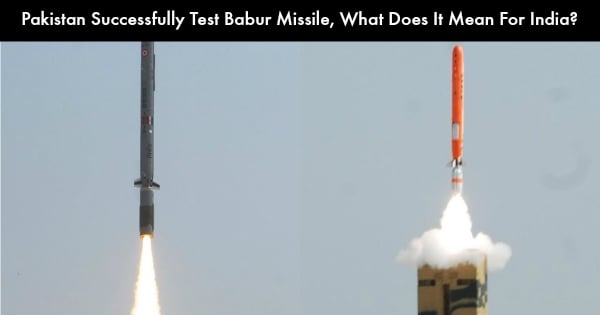Pakistan’s Babur is the first land attack cruise missile to be developed by Pakistan. It is medium ranged subsonic cruise missile which can be launched from ground-based launchers, warships and submarines. The cruise missile is important part of Pakistan’s strategic deterrence.
Last week, Pakistan successfully test fired Babur Weapon System-1 (B) which is an enhanced version of indigenously-built Babur cruise missile.
What is Babur?
- Named after the first Mughal emperor in India, Babur is an unmanned self-propelled guided missile.
- It flies within the earth’s atmosphere and use jet engine technology to propel itself and fly during its major portion of its flight path at approximately constant speed.
- It is designed to deliver a large warhead over long distances with high precision.
- Modern cruise missiles are self-navigating and are capable of travelling at supersonic or high subsonic speeds and are able to fly on non-ballistic, extremely low-altitude trajectory.
Battle of Subsonics – India vs Pakistan
Pakistan successfully test launched Babur cruise missile in 2005 while India countered Pakistan in subsonic cruise missile tech only in 2013 with the test firing of Nirbhay.
Pakistan is believed to have acquired the technology by reverse engineering the Tomhawk missile of the US. Therefore there is not much changes that they can do to enhance this missile except after technology transfer from the US. Pakistan started the development in the early 90’s.
According to a Pakistani Defence Expert, “Babur wasn’t developed by us. We reverse engineered almost intact American Tomahawk missiles with Chinese help. These missiles had fallen over Pakistan when they were fired at Afghanistan. Even our Anza missile is a reverse engineered Stinger.”
However, India has did its homework and came with the latest inculcation of technology in the Nirbhay missile. Late but better. India developed the whole missile from the scratch and it is now even more superior in technology than Babur.
Many of the tests of Nirbhay in the past have failed or have been partially successful. The first completely successful test of Nirbhay came only in November, 2017.
Comparison: Nirbhay vs Babur
The Circular Error Probability (CEP) is the measurement of a missile’s precision. The CEP of Nirbhay is as low as 1-2m as compared to 10m of Babur.
Seekers are the components in the missile which ‘Seek’ their target during its flight. The seekers of Nirbhay are based on Ring Laser Gyro technology which makes it highly precise & accurate. Babur uses Chinese Fiber Optics Gyros in its seekers.
Stealth technology is something using which a missile can escape the enemy radars. Although Babur and Nirbhya both claims to be stealth against any Radar, Nirbhya has the capability to fly as low as 5m, which Babur can’t, making it less stealthy than Nirbhay.
Nirbhay can be launched from all three platforms; ground, air, and water. Babur does not have air force version because of smaller range and heavy weight.
Babur doesn’t seem to have loitering capability, which enables the missile to circle over the target area, to prevent collateral damage or to assign a new target. However, Nirbhay has loitering capability.
Conclusion:
By analyzing the above points and known features of both the systems, Nirbhay is definitely the winner over Babur.













